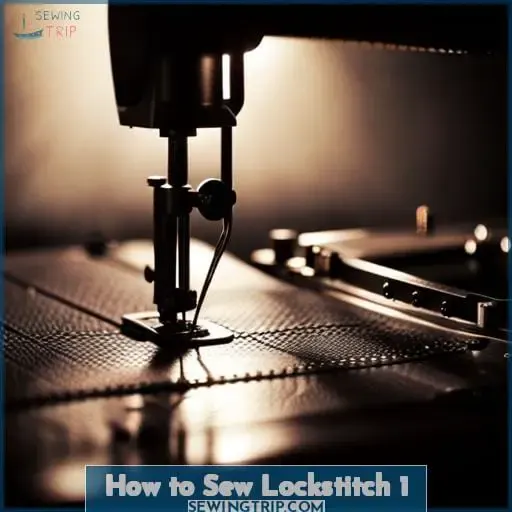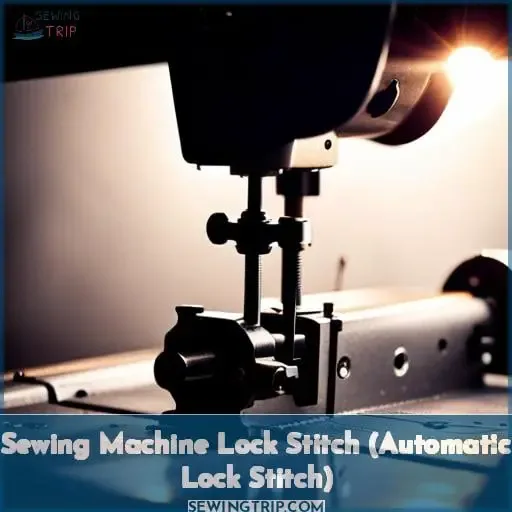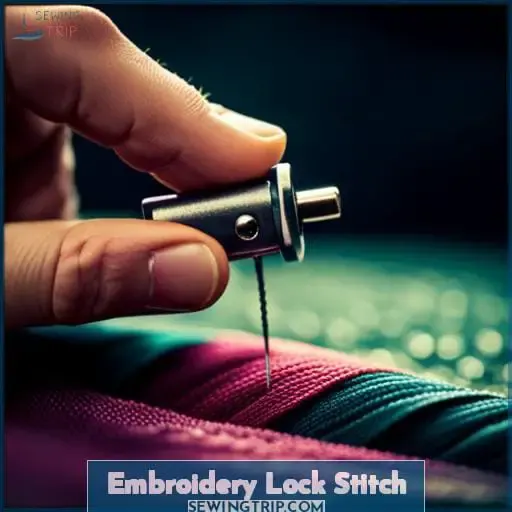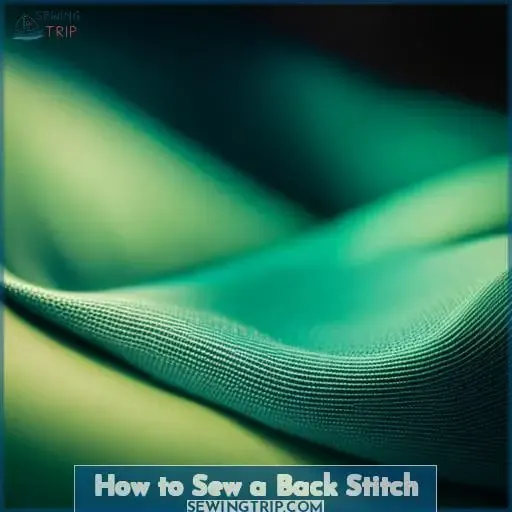This site is supported by our readers. We may earn a commission, at no cost to you, if you purchase through links.
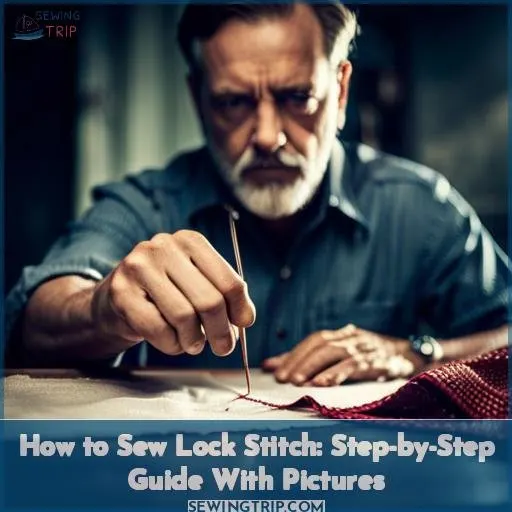 Sewing can be a liberating experience, similar to unlocking a hidden power. Lockstitch is an essential technique that every sewist should master in order to produce garments and items of the highest quality.
Sewing can be a liberating experience, similar to unlocking a hidden power. Lockstitch is an essential technique that every sewist should master in order to produce garments and items of the highest quality.
Table Of Contents
Key Takeaways
- Lockstitch is a powerful and essential technique for high-quality garments and items.
- Using high-quality polyester thread is recommended for lockstitch.
- Lockstitch provides a professional and neat finish, reducing bulk and improving drape.
- Lockstitch is faster and easier than backstitching and does not require tying off or hiding tail ends.
Sewing Lock Stitch Tutorial
Lock stitch is a great alternative to backstitch for sewing projects, offering advantages such as less bulk and improved drape. To sew a lock stitch, you need to adjust the length of your stitches and follow step-by-step instructions.
It’s best to use high-quality polyester thread for this technique in order to get the most effective results.
Lockstitch Vs Backstitch
Compare the Lock Stitch to Backstitch – both secure seams, but with one requiring less thread and giving a neater finish than the other! Self-locking seams are possible with Lock Stitch, without needing to tie off stitch direction or hide tail ends.
Finished seam ends look better too as backstitching can leave unsightly bumps. Secure stitching lines are easier and faster for lockstitches versus pivot stitches substitutes of backstitching.
Plus, securing cut edges is much simpler by using zigzag stitches instead of double back-knotted threads in traditional methods.
Finally, try lock stitch now for an improved professional look – neatness guaranteed!
How to Sew Lock Stitch, Step by Step Instructions
Learn how to sew a lock stitch in a few easy steps and achieve professional results with less thread – it’s quicker than backstitching! Use polyester thread for the best outcome, adjust the stitch length, and set up your presser foot.
Sew darts or quilt blocks with this technique without bulkiness. Cable Stitch family stitches such as Whipped Stem are also related. To make a knot lock stitch, hand-sew at the beginning and end of stitching lines for secure seams that lay flat on sheer fabrics like an outline stitch would do.
Advantages of a Lock Stitch
Unlock the advantages of a lock stitch for neat, secure seams – you’ll be amazed at how quickly and easily this technique works! Its superior thread quality prevents stretching or unraveling, while its stitch protection adds a crisp finish.
There’s no bulkiness nor change in drape effect with this seam-finishing method. Plus, machine lock stitches don’t require reverse stitching, so it’s more efficient than backstitching.
Best Thread for Lock Stitch
For a neat, secure finish to your sewing projects, choose good quality polyester thread for lockstitch. Fabric types and needle size matter for best results; pick something appropriate with the right stitch length.
Lockstitch is used on many fabrics – from sheer fabric to dart seams – as its tiny stitches ensure seam security without bulkiness or distortion of drape effect.
With an ordinary sewing machine, you can create this type of stitching; just adjust the settings accordingly! Make sure you use top-notch thread for a professional result – it’s worth investing in quality materials that will make all the difference in achieving perfect outcomes every time!
Sewing Machine Lock Stitch (Automatic Lock Stitch)
You’ll secure your seams and prevent unraveling with the automatic lock stitch feature on computerized sewing machines. It gives a more professional look, reduces bulk, and improves drape on fabric edges compared to backstitch.
- Adjustment of stitch tension and length is necessary for successful results.
- It is useful for reducing bulk in quilt blocks or stitching darts.
- Lock stitch ends are less bulky and equally secure as backstitches.
- Smaller stitches create a neat finish that can’t be easily unraveled.
- It is a built-in feature of some computers, making it easier than ever before!
Lock Stitch vs Backstitch? Lock Stitching offers an impressive end result with its basic structure: the needle always passes from left to right or vice versa over foundation straight stitches, which creates tiny knots at the beginning and end that cannot be easily undone.
The finished segment looks like small zigzag lines, giving off a thicker profile when compared to plain old BackStitching techniques – making it the perfect choice when both sides need to appear identical, such as top stitching or embroidery projects.
Embroidery Lock Stitch
Experience the perfect finish for embroidery projects with a Lock Stitch – zigzag lines giving off a thicker profile that ensures both sides look identical.
This decorative stitching technique is ideal for fine fabrics and fabric edges to avoid bulk, puckering, or stretching of seams. Use polyester thread in combination with stitch length adjustment to achieve this single stitch structure, which will secure your project from unraveling without having to use a double set of stitches like backstitching does.
To create an embroidery lock stitch, start by laying foundation straight stitches. Then, pass the needle under the first one, keeping the thread above and the next one below – alternating each time until you reach the tail of thread at the end.
Embroidered patterns made using this method have a higher profile than regular ones.
How to Sew a Back Stitch
To create a neat and secure finish for your project, try the back stitch – an alternative to the lock stitch that results in more durable seams. It is perfect for reducing bulk or improving the appearance of quilt blocks. The back stitch creates fewer bulky ends than lock stitches while still securing the beginning or end of sewing to prevent unraveling.
For best results with a back stitch, use good quality polyester thread and adjust your stitching length accordingly. This will help you avoid any reverse stitching too. You can even find replacement manuals online if you’re using an old home sewing machine without an automatic lockstitch function.
Finally, be sure to follow all instructions carefully. These details are essential when creating embroidery patterns with a crisp look that looks exactly the same from both sides of the fabric. Techniques like Stem Stitch (and its related techniques), Whipped Stem Stitch, Outline Stitches like Cable & Split, Portuguese stem, and Japanese stitches all require precision and accuracy when doing Lock/Back Stitches along their foundation rows.
Frequently Asked Questions (FAQs)
What type of needle should I use for lock stitch?
Use a good quality polyester thread and needle to sew with a lock stitch. Choose needles that are sharp enough to penetrate the fabric without damaging it, yet small enough for neat stitches.
What is the difference between lock stitch and back stitch?
Lock stitch is a secure, neat finish that produces less bulk than backstitch. It creates small stitches and ties knots at the start and end for an elegant look. Lock stitch does not require reverse stitching, making it ideal for fine fabrics or darts where double stitches would be visible.
What types of fabrics are best suited for lock stitch?
Lockstitch is an ideal choice for fine fabrics, such as chiffon and organza. It’s also great for sewing darts or reducing bulk in quilt blocks.
How can I make a lock stitch look more decorative?
You can make a lock stitch look more decorative by alternating the thread’s position while stitching and finishing off with a neat knot. Add some foundation stitches to create borders or use other related stitches from the Stem family for an even more eye-catching design.
What is the difference between the lock stitch and other stitches from the Stem Stitch family?
The Lock Stitch is unique among stitches from the Stem family as it creates tiny knots at either end for a secure finish. It’s also less bulky and has no reverse stitching, making it perfect for fine fabrics or quilt blocks.
Conclusion
In summary, lockstitch is a secure and elegant way to sew. It is an alternative to backstitch and is better for fine fabrics and sewing darts. Not only does it prevent unraveling, but it also does not change the drape on fabric edges.
Furthermore, the lockstitch is particularly good for fine fabrics, where double stitches would be too visible. It also reduces bulk and improves the appearance of quilt blocks. With a few simple adjustments to the stitch length, the lockstitch can be sewn on any machine.
It is also useful for a variety of sewing techniques, such as topstitching, darts, and embroidery. Whether you’re a beginner or an experienced sewer, the lockstitch is an invaluable skill to master.

